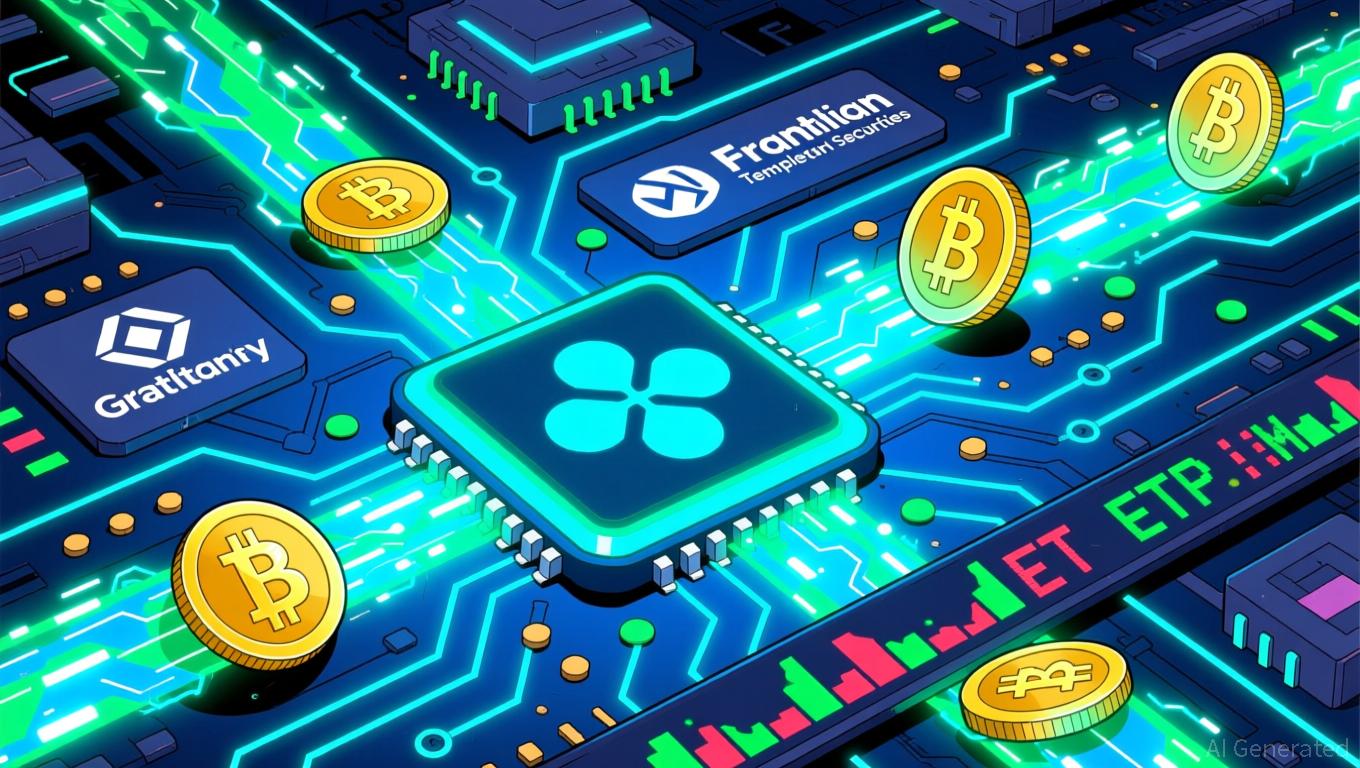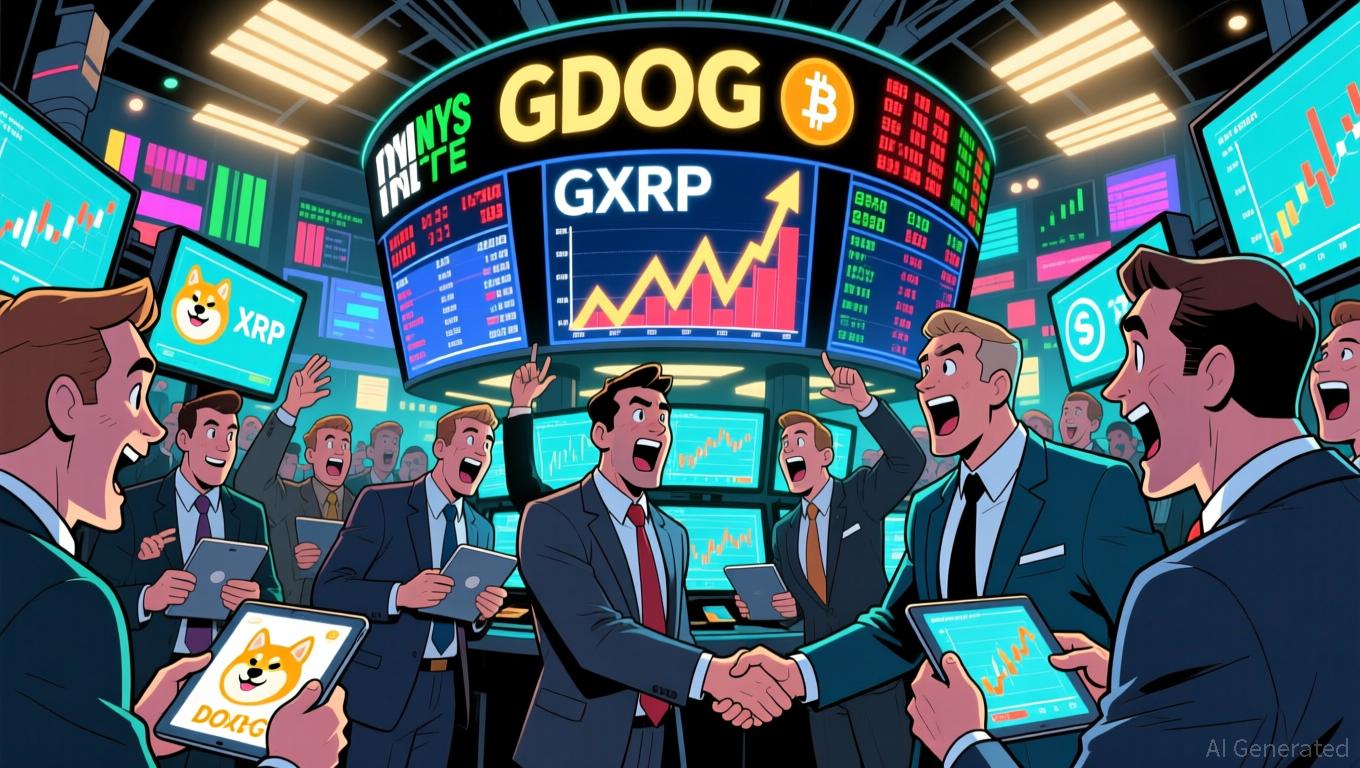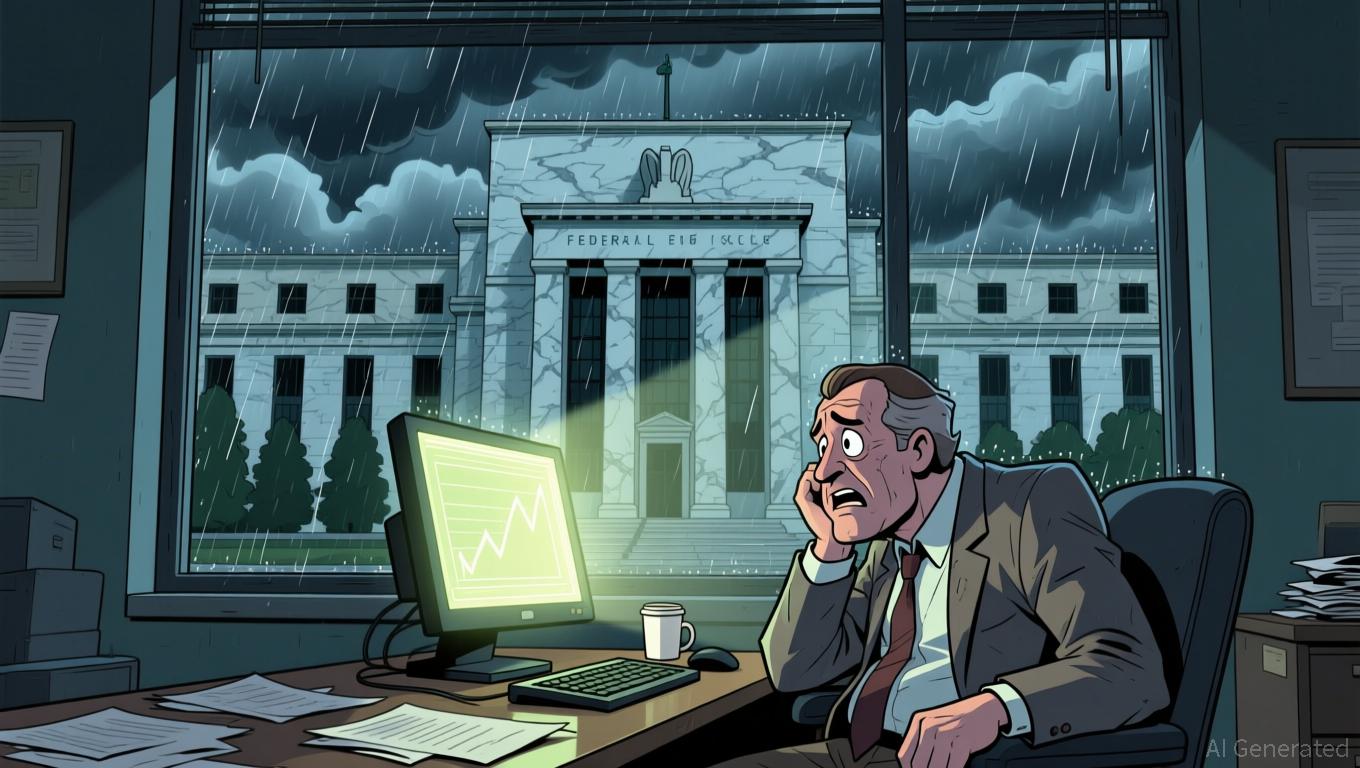BNB News Today: Trump's Clemency Sparks Crypto Market Fluctuations and Fuels Regulatory Discussions
- Trump's pardon of Binance founder CZ Zhao sparks 6% BNB surge and U.S. re-entry speculation. - Critics condemn the move as a conflict of interest, citing Binance’s ties to Trump’s crypto venture. - Binance accelerates Asia expansion via partnerships and $44.2B stablecoin reserves, reinforcing cross-border trading hub status. - BNB’s resilience amid volatility sees analysts project $1,600 targets, though resistance at $1,180 remains a key hurdle. - The pardon highlights shifting crypto regulation under Tr
Trump’s Clemency for Binance Founder Triggers Crypto Market Swings and Strategic Recovery
By [Author Name]

On October 22, President Donald Trump granted a pardon to Changpeng "CZ" Zhao, the creator of Binance, sending shockwaves through the digital asset sector. This decision has reignited conversations about regulatory flexibility and sparked renewed speculation regarding Binance’s international strategies. With legal barriers now lifted for Zhao, Binance Coin (BNB) jumped 6%, and talks intensified about the exchange’s possible return to the U.S. market, from which it has been absent since 2019.
After admitting guilt to anti-money laundering offenses in 2023 and serving a four-month sentence, Zhao now faces fewer limitations in his involvement with Binance. Trump’s pardon, part of his broader pro-cryptocurrency platform, has been interpreted as a challenge to the Biden administration’s regulatory stance. Crypto supporters claim the pardon affirms the sector’s legitimacy, according to
Despite regulatory obstacles, Binance continues to command 40% of the global spot trading market and has used the pardon to speed up its growth plans. The company has strengthened its position in Asia through collaborations such as SoftBank’s PayPay investment in Binance Japan and by securing a full license to operate in Thailand. Its $44.2 billion in ERC-20 stablecoins supports liquidity in countries like India, Brazil, and South Korea, further establishing Binance as a key player in international trading, as noted by
Market responses have varied.
The pardon has also revived discussions about regulatory safeguards. While Trump’s administration has adopted a more crypto-supportive approach—rolling back enforcement actions from the Biden era—financial authorities continue to warn of potential dangers. The SEC’s recent decision to drop its lawsuit against Binance and the Justice Department’s dismissal of charges related to Coinbase signal a changing regulatory environment, as previously covered by Time. Opponents argue that the pardon weakens anti-money laundering (AML) initiatives, especially in light of Binance’s $4.3 billion settlement for compliance lapses in 2023, according to
Within the crypto community, opinions remain split over Zhao’s possible return to a leadership position. Following the pardon, Polymarket odds for his reinstatement as CEO spiked to 82% before dropping to 36% as doubts emerged, as reported by
As Binance faces this crucial juncture, industry watchers are monitoring for regulatory developments and strategic decisions. A return to the U.S. market could add billions in trading volume, but challenges persist, including meeting AML standards and competing with domestic platforms like Coinbase. For now, BNB’s price movements and Binance’s global strategies highlight the unpredictable intersection of politics, regulation, and technological innovation in the cryptocurrency industry.
Disclaimer: The content of this article solely reflects the author's opinion and does not represent the platform in any capacity. This article is not intended to serve as a reference for making investment decisions.
You may also like
DeFi's Automation Shortfall Addressed: Orbs Introduces dSLTP to Achieve CeFi-Grade Risk Control
- Orbs launches dSLTP, a decentralized stop-loss/take-profit protocol for DEXs, bridging CeFi automation with DeFi. - The protocol automates risk management via on-chain orders, reducing real-time monitoring needs during volatility. - Built on Orbs' Layer-3 infrastructure, it enhances DEX functionality with CeFi-grade tools while maintaining decentralization. - This innovation addresses DeFi's automation gap, potentially driving DEX adoption and institutional-grade on-chain trading.

XRP Latest Updates: XRP ETFs Enhance Market Liquidity, Large Holder Sell-Offs Postpone Price Increases to 2026
- XRP ETFs launched in late 2025 (e.g., Grayscale's GXRP) expanded institutional access, but whale sales delayed price gains until 2026. - XRP traded near $2.12 as 41.5% of its supply remains in loss, with whale-driven volatility and structural supply imbalances persisting. - Ripple secured $500M institutional backing for XRP Ledger infrastructure, while projects like XRP Tundra accelerated tokenization plans. - XRP trails Ethereum in market cap ($129B vs. $373B) due to lack of smart-contract capabilities,

Dogecoin News Today: Grayscale's Alternative Coin ETFs Indicate Change: Bitcoin Withdrawals Differ from Rising Interest in Altcoins
- Grayscale launches GDOG and GXRP ETFs on NYSE, offering direct exposure to Dogecoin and XRP via spot ETPs. - ETFs convert private trusts to public offerings, aligning with industry trends to boost liquidity and attract institutional capital. - GXRP competes with existing XRP products ($422M inflows), while GDOG follows DOGE's rise to 9th-largest crypto by market cap. - SEC's "Project Crypto" framework and FalconX partnership strengthen Grayscale's position in regulated altcoin investment vehicles. - Altc

Bitcoin Update: Federal Reserve Postponements and $1.2 Billion ETF Withdrawals Trigger 26% Drop in Bitcoin Value
- Bitcoin falls 26% to $83,000 amid Fed's delayed rate-cut timeline and $1.2B ETF outflows, marking its longest losing streak since 2024. - Analysts warn of structural risks, with Bloomberg's Mike McGlone projecting a potential $10,000 drop and Cathie Wood revising bullish 2030 forecasts. - Market volatility intensifies as JPMorgan's index exclusion proposal sparks crypto sector backlash and S&P 500 defensive sector shifts highlight interconnected risks. - Fed's December rate-cut speculation and upcoming i
